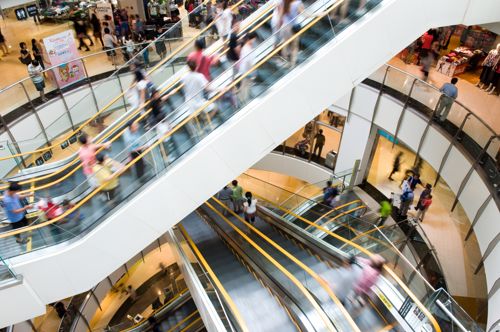
Shopping around: IoT in modern malls
By Perle SystemsFebruary 20, 2023
Since the advent of modern civilization, people have been trading goods in markets. In bygone eras, merchants and customers would haggle over the price of wares in town squares. Now, we have the shopping mall. Although the mammoth buildings filled with hundreds of stores are a relatively recent development, the concept has stayed the same: Customers hand over money in exchange for merchandise.
What is changing, however, is how we interact with these spaces. Previously, retailers advertised to consumers in a passive, one-directional manner. They displayed impersonal signage and adverts inside and outside their stores in the hopes their messages would be received.
Likewise, customers wandered down corridors for hours, hoping by chance to find signs indicating that a shop sold what they were looking for. In a similarly analog fashion, shopkeepers would spend hours carrying out time-consuming and laborious tasks like stock take, product exchanges and various customer services activities.
The internet of things (IoT) has rendered the need for those manual endeavors obsolete. Here's how technology powered by the internet is shaping mall-goers' shopping experiences:
Personalized shopping
Almost every person in a mall is bound to have at least one internet-connected device on them, usually a smartphone. Multiply this by the number of people in a mall on any given day and there are potentially thousands of IoT devices in a relatively confined space.
That equals a lot of data floating around, which can be used to personalize a customer's shopping experience. As Matellio explains, information about past purchases might be utilized by shops to send customized shopping suggestions and notifications to a shopper's phone.
In a similar vein, stores can send potential consumers alerts about coupons, discounts and any sales they may be running. Retailers can also offer shoppers easy online assistance through mobile applications, eliminating the need to ask shopkeepers questions about product availability, exchange and refund policies or even business hours.
Smart shops
This kind of information can be used by retailers to streamline their internal business processes, too. For example, RFID tags can be used for shelf monitoring. Weight sensors placed on shelves can determine when goods are removed from the shelf and, therefore, need to be replaced. Alerts can be sent to stockers to notify them that shelves need to be restocked. This can also tell businesses which goods are more popular and need to be ordered with increased regularity.
Additionally, as Built In explains, smart barcode scanners can transmit data about in-store merchandise to connected devices that then automatically relay it to software for automatic inventory management. Store owners can install self-checkout machines that also capture information about goods that consumers are purchasing, which also assists with inventory control.
On the shop floor, IoT beacons and sensors can be used to collect data about foot traffic which business owners can use to optimize their floor space by strategically placing promotional stands in more frequented areas. Such information can also be used to determine how many staff members are needed at any given time based on historical data.
Partner with IoT experts at Perle
Perle Systems collaborate with premium IoT brands to provide a wide range of high-end products designed to meet your IoT requirements. No matter what your store needs, we've got it all in one place.



